The Mahābhārata is one of the two major Sanskrit epics of #AncientIndia and the longest Sanskrit epic consisting of over 100,000 shloka or over 200,000 individual verse lines (each shloka is a couplet). The epic is part of itihasa.
#Mahabharata
#Mahabharata

Besides its epic narrative of the Kurukshetra War and the fates of the Kauravas and the Pandavas, it contains philosophical and devotional material, such as a discussion of the four "goals of life" or purusharthas. The latter are enumerated as Dharma (right action),... 

Artha(purpose), Kama (pleasure), and Moksha (liberation). The epic is ascribed to sage Vyasa, who is also a major character in the epic. The first section of the Mahābhārata states that it was Lord Ganesha who, at the request of Vyasa, wrote down the text to Vyasa's dictation. 

The core of Mahābhārata is structured in the form of a dialogue between Kuru king Dhritarashtra and Sanjaya, his advisor and the charioteer. Sanjaya narrates each incident of the Kurukshetra War, fought in 18 days, as and when it happened. 

The Mahābhārata itself ends with the death of Lord Krishna and the subsequent end of his dynasty & ascent of the Pandava brothers to heaven. It also marks the beginning of the Hindu age of Kali Yuga, 4th & final age of mankind, in which great values and noble ideas have crumbled. 

The Mahābhārata has been written in 18 books, called parvas. The 18 parvas are:
1 - Adi Parva (The Book of the Beginning)1–19
Adi means first. It is the 1st of the 18 parvas of the Mahābhārata. It tells about the recital of the Mahābhārata at the sarpasattra of king Janamejaya..
1 - Adi Parva (The Book of the Beginning)1–19
Adi means first. It is the 1st of the 18 parvas of the Mahābhārata. It tells about the recital of the Mahābhārata at the sarpasattra of king Janamejaya..

who is the grandson of great the warrior Abhimanyu and the great-grandson of Arjuna, by Vaisampayana, a disciple of sage Vyasa, at Takṣaśilā. Vaisampayana was an ancient Indian sage who was the original teacher of the Krishna Yajur-Veda. 

The Ashvalayana Grihya Sutra mentions him as Mahabharatacharya. He is also mentioned in the Taittiriya Aranayaka and the Ashtadhyayi of Pāṇini. Vyasa taught the Mahābhārata of 100,000 verses to Vaisampayana. Many years later, the recitation of Vaisampayana to Janamejaya.... 

is then recited again by Ugrasrava Sauti to an assemblage of sages performing the 12 year long sacrifice for King Saunaka Kulapati in the Naimisha forest. The history of the Bharata race is told in detail and the parva also traces history of the Bhrigu race. 

The early life of the Pandava and Kaurava families is also depicted in this parva. This parva is divided into 19 sub parvas and about 236 chapters. The death of the rakshasa Vaka and the marriage of Draupadi were some of the major events of the Adi Parva. 

2 - Sabha Parva(The Book of the Assembly Hall)20–28
This Parva accounts details of Maya Danava and his efforts to construct the palace & court, Indrapastha. It contains the story of the Game of Dice, the event that was the turning point in the lives of the Kauravas and Pandavas.
This Parva accounts details of Maya Danava and his efforts to construct the palace & court, Indrapastha. It contains the story of the Game of Dice, the event that was the turning point in the lives of the Kauravas and Pandavas.

The parva ends with the game of dice ending with the exile of the Pandavas. The Rajasuya Yajna, performed by Yudhisthira is one of the major highlights of this Parva.
3 - Vana Parva also Aranya-parva(The Book of the Forest)29–44
It's one of the longest Parvas of the Mahābhārata.
3 - Vana Parva also Aranya-parva(The Book of the Forest)29–44
It's one of the longest Parvas of the Mahābhārata.

It contains detailed accounts of the life of the Pandavas during their exile in the forest, for the period of 12 years and all the descriptions of their discussions and the lessons that they learn in forest. It also contains the preparation of war by the Pandavas. 
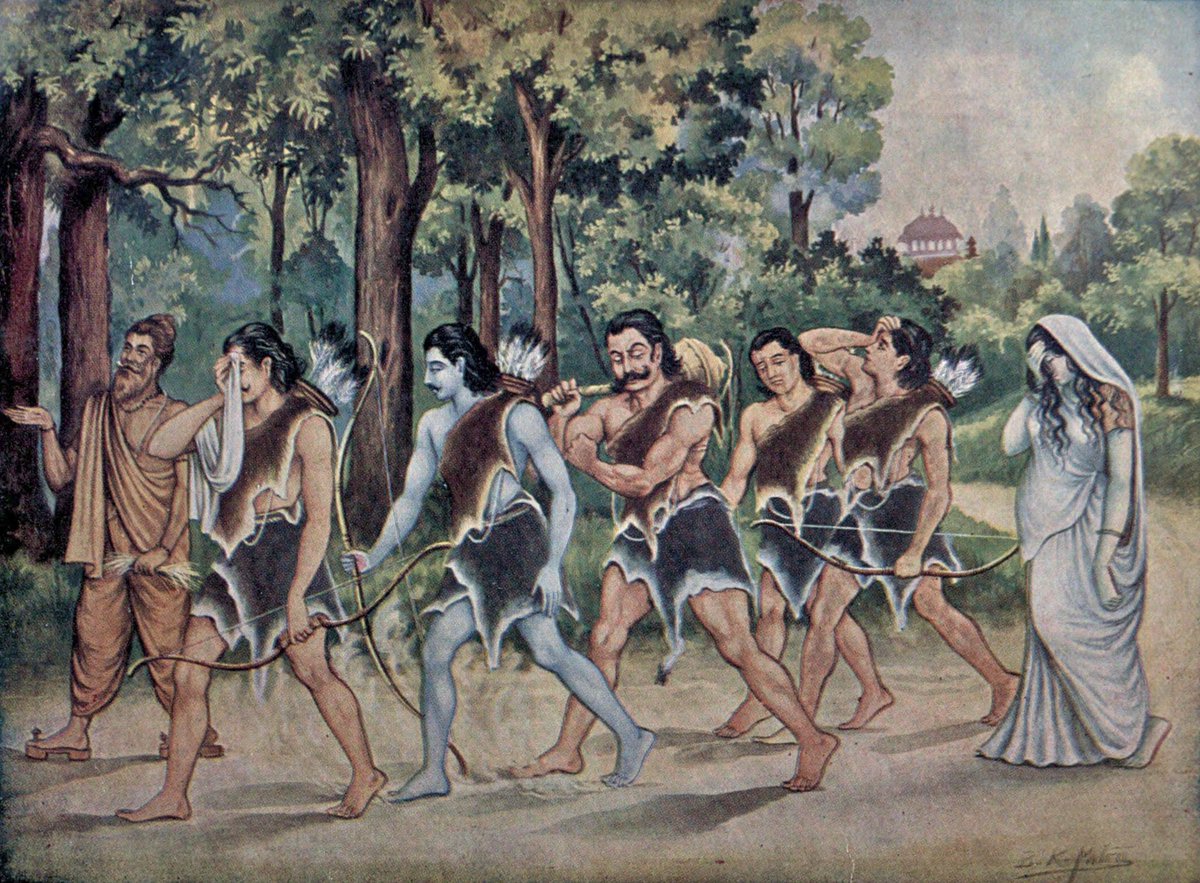
4 - Virata Parva (The Book of Virata)45–48
The 4th book of Mahābhārata largely deals with the thirteenth year of exiled life lived in incognito in the Kingdom of Virat. The five brothers stayed there in disguise, and Draupadi too stayed in the kingdom for a year, in disguise.
The 4th book of Mahābhārata largely deals with the thirteenth year of exiled life lived in incognito in the Kingdom of Virat. The five brothers stayed there in disguise, and Draupadi too stayed in the kingdom for a year, in disguise.

All of them were disguised in accordance with their skill and quality. Another major episode in this parva is the death of the general of Virat’s army, Kichika, who was also the brother of Virat’s wife, Sudeshna. 
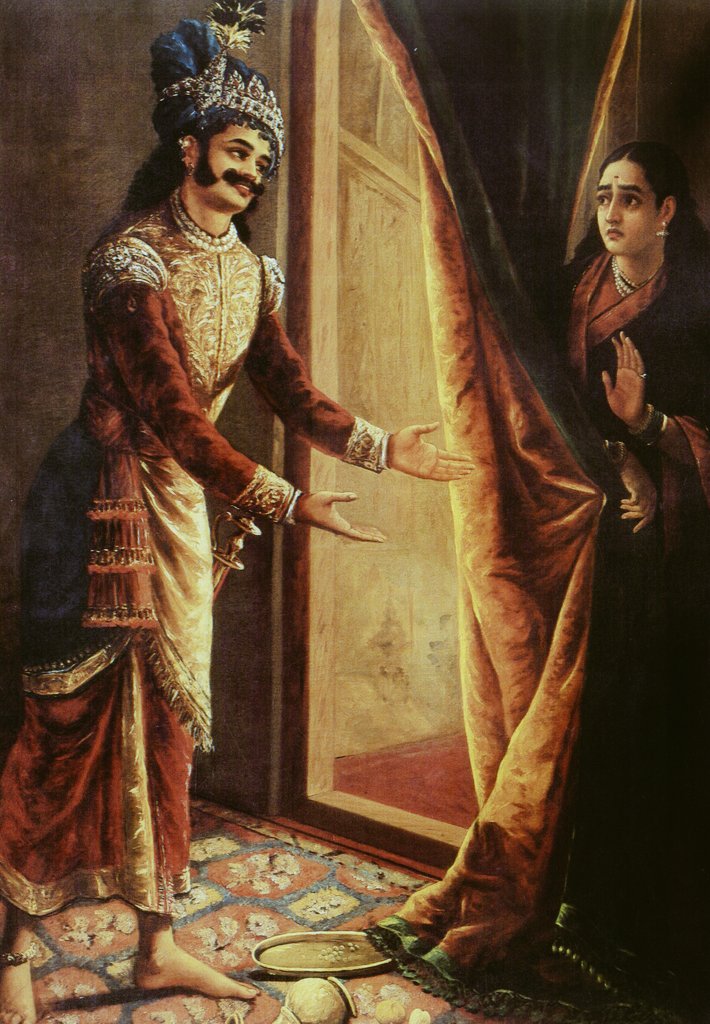
5 - Udyoga Parva(The Book of the Effort)49–59
It consists of 10 sub-parvas&abt 198 chapters. It deals with the period immediately following the end of the exile of the Pandavas. It describes the effort to keep peace after their half of the kingdom had been denied to the Pandavas.

It consists of 10 sub-parvas&abt 198 chapters. It deals with the period immediately following the end of the exile of the Pandavas. It describes the effort to keep peace after their half of the kingdom had been denied to the Pandavas.


After the failed attempts to maintain peace, the preparation for the Great Kurukshetra War began.
6 - Bhishma Parva(The Book of Bhishma)60–64
It deals with the 1st ten days of the Kurukshetra War. This parva is named after the commander-in-chief of the Kaurava army, Bhishma.
6 - Bhishma Parva(The Book of Bhishma)60–64
It deals with the 1st ten days of the Kurukshetra War. This parva is named after the commander-in-chief of the Kaurava army, Bhishma.

This parva is centered around the life story Bhishma, the son of Shantanu and contains the story of Shantanu’s marriage to Satyavati, a fisher-maid. This book is also widely studied in The #BhagvadGita The book ends with Bhishma on the bed of arrows and unable to lead the army. 
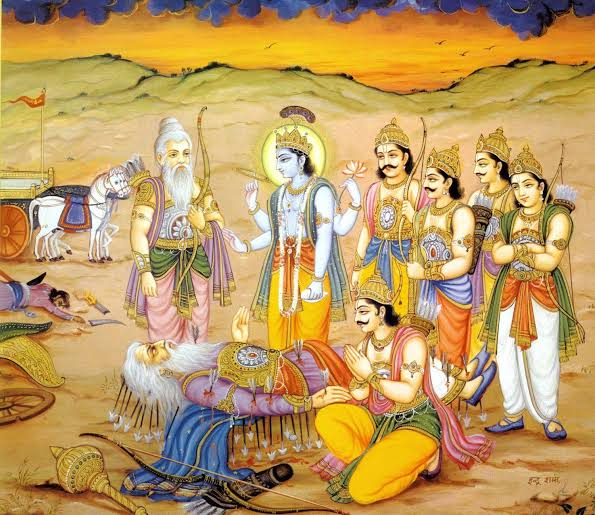
7 - Drona Parva (The Book of Drona)65–72
This book is based on Drona, who takes over as the commander-in-chief of the Kaurava army. It is the major book of the war. Most of the great warriors on both sides are dead by the end of this book. Drona died on the 15th day of the war.
This book is based on Drona, who takes over as the commander-in-chief of the Kaurava army. It is the major book of the war. Most of the great warriors on both sides are dead by the end of this book. Drona died on the 15th day of the war.

This parva also denotes how the great war became brutal with each passing day. Drona had to fight for the Kaurava army, though he knew that the Pandavas were right.
8 - Karna Parva (The Book of Karna)73
This book consists of only one sub-parva, having 96 chapters.
8 - Karna Parva (The Book of Karna)73
This book consists of only one sub-parva, having 96 chapters.

This parva revolves entirely around the life of Karna, starting with his birth,till his death in the great war at the hands of Arjuna and his appointment as the 3rd commander-in-chief of the Kaurava army.The epic confrontation of Karna and Arjuna is also contained in this parva. 
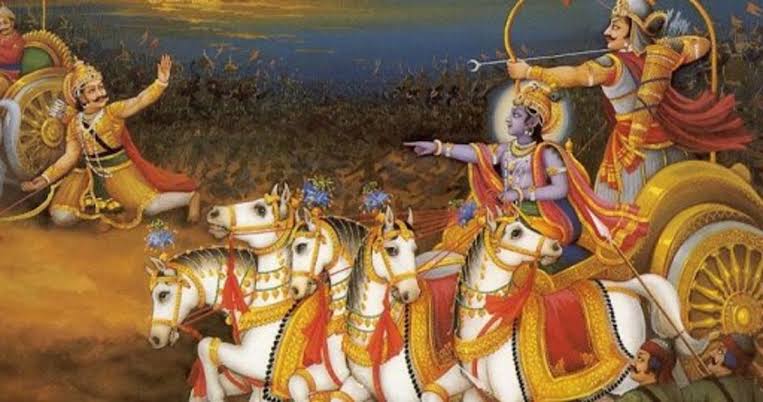
9 - Shalya Parva(The Book of Shalya)74–77
This book consists of 4 sub parvas and 64 chapters. Also told in detail is the pilgrimage of Balarama to the fords of the river Saraswati and the mace fight between Bhima and Duryodhana which ends the war, since Bhima kills Duryodhana.
This book consists of 4 sub parvas and 64 chapters. Also told in detail is the pilgrimage of Balarama to the fords of the river Saraswati and the mace fight between Bhima and Duryodhana which ends the war, since Bhima kills Duryodhana.
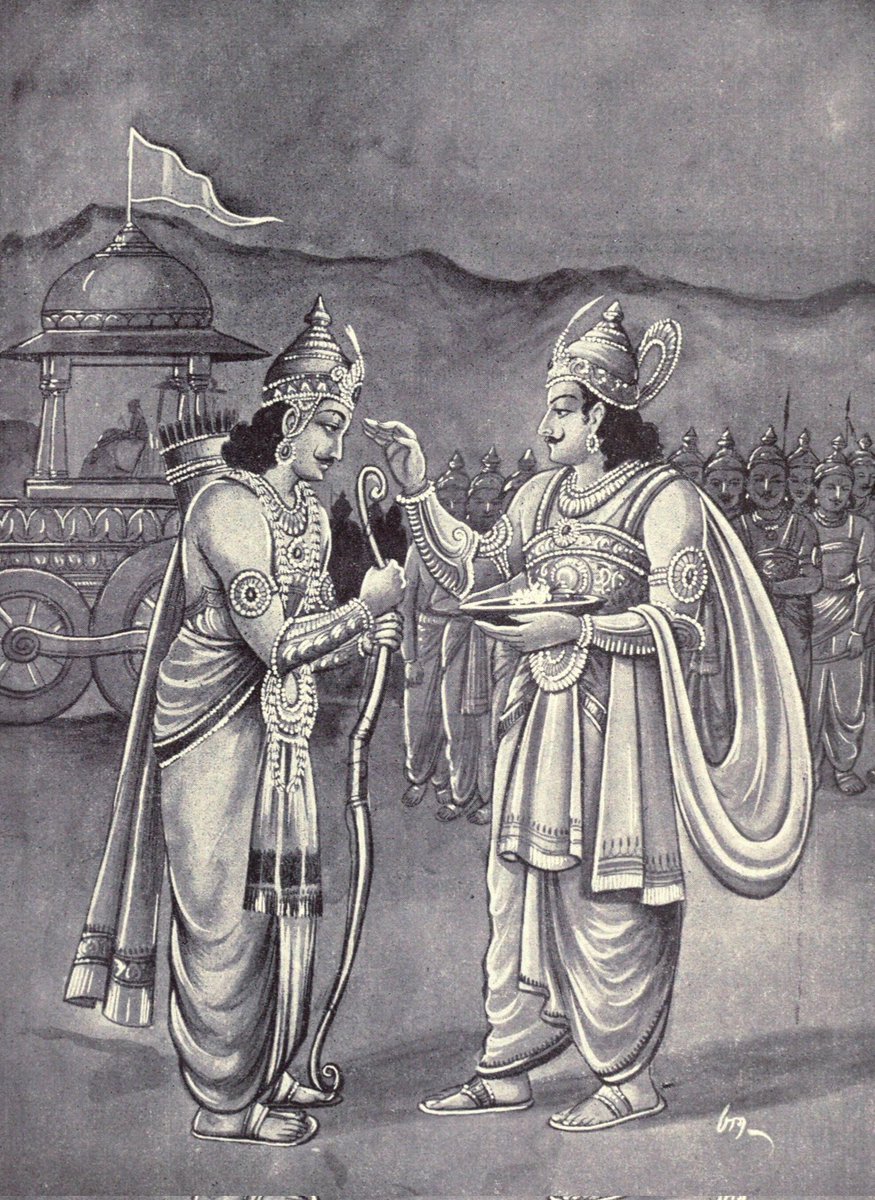
This Parva shows the take-over of the Kaurava army by Shalya,after the death of Karna. It has details of the last day of the Kurukshetra war. One of the major episodes in this parva is the death of Shakuni at the hands of Sahadeva. It also recites Shalya’s death, by Yudhishthira. 

10 - Sauptika Parva(The Book of the Sleeping Warriors)78–80
It deals with the revenge taken by Aswatthama, Kripa & Kritavarman.They go to the Pandavas army camp at night and kill all those who were sleeping. Pandava brothers, Krishna and Satyaki survived as they weren’t sleeping.
It deals with the revenge taken by Aswatthama, Kripa & Kritavarman.They go to the Pandavas army camp at night and kill all those who were sleeping. Pandava brothers, Krishna and Satyaki survived as they weren’t sleeping.

11 - Stri Parva (The Book of the Women)81–85
This book consists of 4 sub-parvas and 27 chapters. This book deals with the impact of the Kurukshetra War on the women. Gandhari, Kunti and the women of the Kurus and Pandavas lament the dead.

This book consists of 4 sub-parvas and 27 chapters. This book deals with the impact of the Kurukshetra War on the women. Gandhari, Kunti and the women of the Kurus and Pandavas lament the dead.

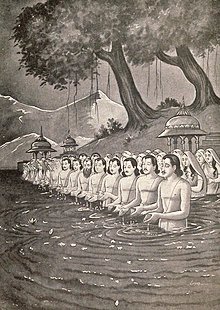
12 - Shanti Parva(The Book of Peace)86–88
It is one of the longest parvas after the end of the war. It deals with the aftermath of the great battle, the crowning of Yudhishthira as the king of Hastinapur, and the instructons given by Bhishma to the new king, Yudhishthira.
It is one of the longest parvas after the end of the war. It deals with the aftermath of the great battle, the crowning of Yudhishthira as the king of Hastinapur, and the instructons given by Bhishma to the new king, Yudhishthira.

This parva also deals with the attempt to restore peace in the kingdom.
13 - Anushasana Parva (The Book of the Instructions)89–90
This book deals with Bhishma giving the final instructions to Yudhidhthira, in continuation with what he started in the Shanti Parva.
13 - Anushasana Parva (The Book of the Instructions)89–90
This book deals with Bhishma giving the final instructions to Yudhidhthira, in continuation with what he started in the Shanti Parva.

Bhishma discusses with him and the sages, the duties of a ruler, and also gives him instruction on Dharma.
14 - Ashvamedhika Parva (The Book of the Horse Sacrifice)91–92
This book tells about the royal ceremony of Ashvameda conducted by Yudhishthira, on instructions of Krishna.
14 - Ashvamedhika Parva (The Book of the Horse Sacrifice)91–92
This book tells about the royal ceremony of Ashvameda conducted by Yudhishthira, on instructions of Krishna.

It consists of 2 sub parvas and 92 chapters. It also has accounts of Krishna advising Yudhishthira to conduct mining in Himavat to restore the wealth in the kingdom. It tells about the world conquest by Arjuna. The Anugita is told by Krishna to Arjuna. 
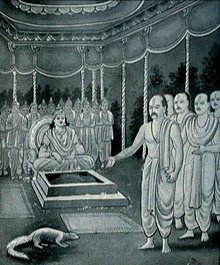
15 - Ashramavasika Parva(The Book of the Hermitage)93–95
This Parva describes the period of prosperous and golden rule under the kingship of Yudhishthira after the Kurukshetra war. The meeting of Yudhishthira with Narada is narrated in this Parva.
This Parva describes the period of prosperous and golden rule under the kingship of Yudhishthira after the Kurukshetra war. The meeting of Yudhishthira with Narada is narrated in this Parva.
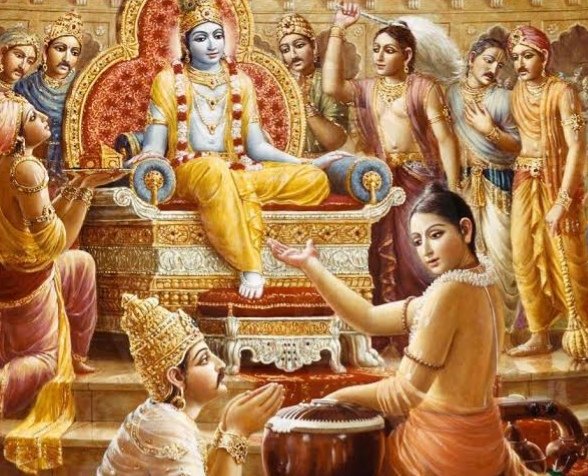
It also details about the eventual deaths of Dhritarashtra, Gandhari and Kunti in a forest fire when they are living in a hermitage in the Himalayas. Vidura predeceases them and Sanjaya on Dhritarashtra's bidding, goes to live in the higher Himalayas. 

16 - Mausala Parva(The Book of the Clubs)96
It is one of the shortest parvas. It has accounts of the death of Krishna 36 years, after the Kurukshetra war. It also contains sorrowful incidents of Lord Krishna’s tribesmen, the infighting between the Yadavas with maces(mausala)..
It is one of the shortest parvas. It has accounts of the death of Krishna 36 years, after the Kurukshetra war. It also contains sorrowful incidents of Lord Krishna’s tribesmen, the infighting between the Yadavas with maces(mausala)..

and the eventual destruction of the Yadavas.
17 - Mahaprasthanika Parva (The Book of the Great Journey)97
This parva consists of 3 chapters. It recites the great journey of Yudhisthira and his brothers across the whole country and finally their ascent of the great Himalayas...
17 - Mahaprasthanika Parva (The Book of the Great Journey)97
This parva consists of 3 chapters. It recites the great journey of Yudhisthira and his brothers across the whole country and finally their ascent of the great Himalayas...

where each Pandava falls except for Yudhishthira.
18 - Svargarohana Parva (The Book of the Ascent to Heaven)98
The last Parva consists of 5 chapters. It's the 2nd shortest Parva. It describes Yudhishthira’s final test & the return of the Pandavas to the spiritual world (svarg).
18 - Svargarohana Parva (The Book of the Ascent to Heaven)98
The last Parva consists of 5 chapters. It's the 2nd shortest Parva. It describes Yudhishthira’s final test & the return of the Pandavas to the spiritual world (svarg).
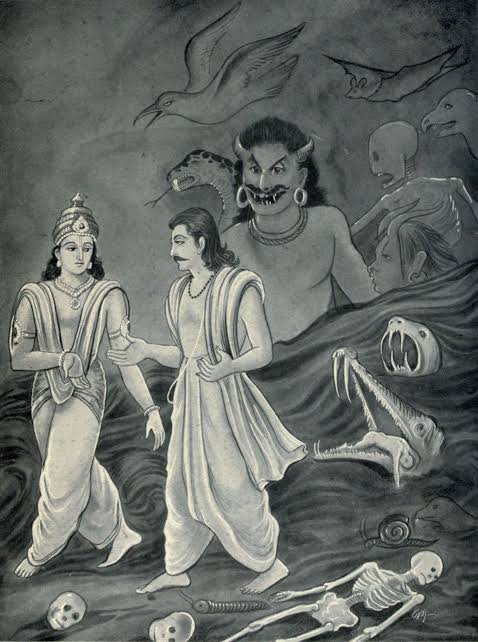
Khila Harivamsa Parva(The Book of the Genealogy of Hari)99–100
This is an addendum to the 18 books, and covers those parts of the life of Lord Krishna which is not covered in the 18 parvas of the Mahābhārata.
This is an addendum to the 18 books, and covers those parts of the life of Lord Krishna which is not covered in the 18 parvas of the Mahābhārata.

The Harivamsa Purana (Sanskrit: हरिवंश Harivaṃśa, literally "the lineage of Hari") is an important work of Sanskrit literature and is traditionally ascribed to sage Vyasa. 
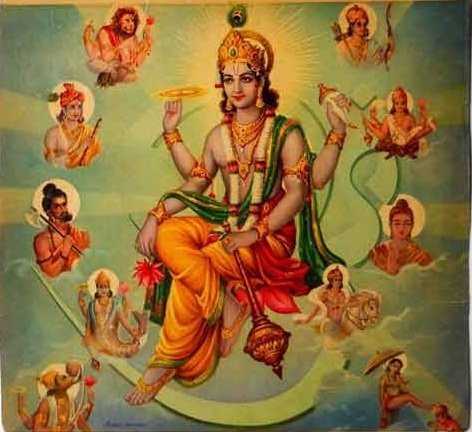
In the Stri Parva, there's a mention of Duryodhana's wife, Bhanumati. I had written a thread on her fascinating story. Do read. Link 👇
https://twitter.com/VandanaJayrajan/status/1342517332459982849?t=GH6ME2PuY-kAs0ZOXAeTLA&s=19
• • •
Missing some Tweet in this thread? You can try to
force a refresh

















